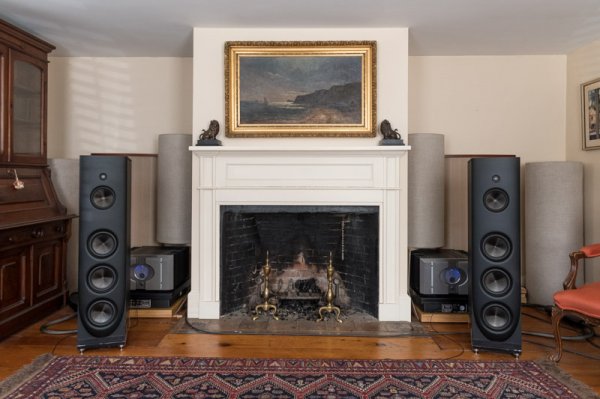Al M. came over tonight to hear the results of my continued efforts to fine tune speaker position. We like what we heard until we put on the Kremer/Bach solo violin recording. Al thought the strings sounded a bit "silvery" with less wood tone than the last time he was here, so we tried adjusting speaker toe in. He then made the wonderful suggestion to rotate the Tube Traps so that the reflection strips would face the corners of the front wall on either side of my fireplace. Wow, what a difference. Killing this reflection really cleaned up the sound. The violin had more wood tone, more weight, but still great string tone. We then played Holst's Planets again and it was even better. The image became bigger, the sound grander, the instruments clearer. The whole sound was cleaner. I think I've now got my new Q3s really sounding good. Thanks Al for this great suggestion.
You are very welcome, Peter. I had expected that the tube trap rotation would make a significant difference, but I was not prepared for such a transformative one. On the Kremer/Bach solo violin recording I heard what I expected but to a greater degree, yet especially on the Holst Planets the sound was different in surprising ways, and all for the better.
With your new speaker positioning a few inches more into the room, and slight adjustment of toe-in, the highs were more pronounced than before, and in the Kremer/Bach it was just too much. The tube trap rotation took care of that, nicely allowing the wood component of the violin sound to once again come through.
Holst Planets after the tube trap rotation: The extreme highs (cymbal crashes and triangles) remained as prominent as before, but overall the integration of highs and mids was better, more of one continuum. The image before had been relatively large, but I was really surprised just how HUGE the sound became after the simple tube trap rotation. It was grand indeed, and the energy completely filled the room, it was an immersive experience. Yet imaging within the soundstage was very precise. Resolution in terms of separation of instruments was outstanding.
At the same time the sound gained even more body, it was a really meaty, impressive orchestral presentation. Trombones and low strings had more weight, as did the kettle drums in 'Uranus'. I thought I could also hear the skin of the kettle drums more as they were hit. The massed violins had sounded a bit thin before, but now gained a beautiful weighty but still silky tone. In 'Venus' the difference between massed violins and solo violin was more pronounced.
A part of how good it eventually sounded may also have been the new 33 1/3 rpm pressing of the recording that you recently acquired. Dynamics were outstanding.


